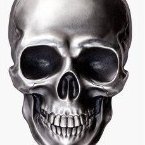Announcements
-
Similar Content
-
Latest Posts
-
By robbo_rb180 · Posted
You could add a banjo fitting to go directly up and a 90 degree fitting with an adapter from aeroflow or speed flow. Run the brake line over the top of the ducting. -
Yes indeed ; They offered it to me, I'm waiting for their quote 😉
-
Hey, thanks dude. Freedom to do whatever one wants to with their own car and build, but personally I don't want anything that's too precious. If I can't beat on it when I feel inspired, what's the point of having a car like this? And if I break something, it's me who's going to be fixing it myself...







Recommended Posts
Create an account or sign in to comment
You need to be a member in order to leave a comment
Create an account
Sign up for a new account in our community. It's easy!
Register a new accountSign in
Already have an account? Sign in here.
Sign In Now